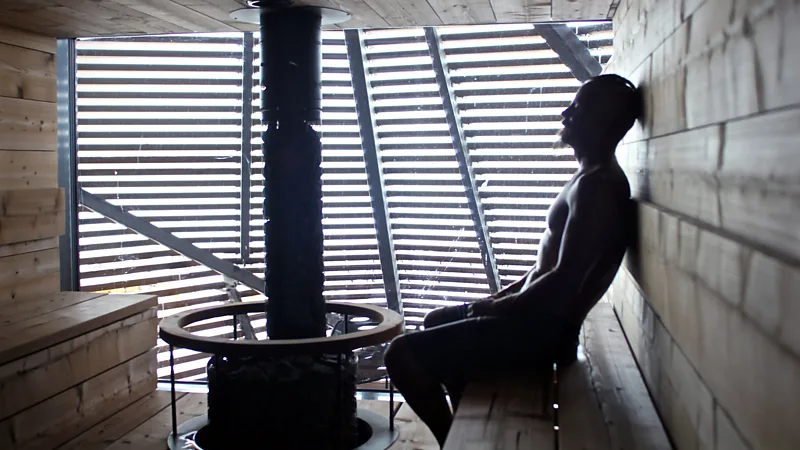Is a waning Canadian dream fuelling reverse migration in Punjab?
Canada has long been a draw for people from India's Punjab province seeking new opportunities elsewhere. But has the Canadian dream soured?

It's hard to miss the ardour of Punjab's migrant ambitions when driving through its fertile rural plains.
Billboards promising easy immigration to Canada, Australia, New Zealand and the UK jut out through ample mustard fields.
Off the highways, consultancies offer English language coaching to eager youth.
Single-storey brick homes double up as canvasses for hand-painted mural advertisements promising quick visas. And in the town of Bathinda, hundreds of agents jostle for space on a single narrow street, pledging to speed up the youth's runaway dreams.
For over a century, this province in India's northwest has seen waves of overseas migration; from the Sikh soldiers inducted into the British Indian Army travelling to Canada, through to rural Punjabis settling in England post-independence.
But some, especially from Canada, are now choosing to come back home.
One of those is 28-year-old Balkar, who returned in early 2023 after just one year in Toronto. Citizenship was his ultimate goal when he left his little hamlet of Pitho in the wake of the Covid-19 pandemic. His family mortgaged their land to fund his education.
But his Canadian dream quickly lost its allure a few months into his life there.
"Everything was so expensive. I had to work 50 hours every week after college, just to survive," he told the BBC. "High inflation is making many students leave their studies."
Balkar now runs an embroidery business from a small room on one side of the expansive central courtyard in his typical Punjabi home. He also helps on his family's farm to supplement his income.
Opportunities for employment are few and far between in these rural areas, but technology has allowed entrepreneurs like him to conquer the tyranny of distance. Balkar gets the bulk of his business through Instagram.
"I have a good life here. Why should I face hardships there when I can live at home and make good money?" he asks.
The BBC spoke to at least half a dozen reverse migrants in Punjab who shared similar sentiments.
It was also a common refrain in the scores of videos on YouTube shared by Indians who had chosen to abandon their life in Canada and return home. There was a stark difference one young returnee told the BBC between the "rosy picture" immigration agents painted and the rough reality of immigrant life in Toronto and Vancouver.
The "Canada craze" has let up a bit - and especially so among well-off migrants who have a fallback option at home, says Raj Karan Brar, an immigration agent in Bathinda who helps hundreds of Punjabis get permanent residencies and student visas every year.
The desire for a Canadian citizenship remains as strong as ever though among middle- and lower middle-class clients in rural communities.
But viral YouTube videos of students talking about the difficulty in finding jobs and protests over a lack of housing and work opportunities has created an air of nervousness among these students, say immigration agents.
There was a 40% decline in applications from India for Canadian study permits in the second half of 2023, according to one estimate. This was, in part, also due to the ongoing diplomatic tensions between India and Canada over allegations Indian agents were involved in the murder of Canadian Sikh separatist leader Hardeep Singh Nijjar.
There are also hints of deeper cultural factors at play, for a waning Canadian dream among an older generation of Indian migrants.
Karan Aulakh, who spent nearly 15 years in Edmonton and achieved career and financial success, left his managerial job for a comfortable rural life in Khane ki Daab, the village where he was born in 1985.
He told the BBC he was upset by LGBT-inclusive education policies in Canada and its 2018 decision to legalise recreational cannabis.
Incompatibility with the Western way of life, a struggling healthcare system, and better economic prospects in India were, he said, key reasons why many older Canadian Indians are preparing to leave the country.
"I started an online consultancy - Back to the Motherland - a month and a half ago, to help those who want to reverse migrate. I get at least two to three calls every day, mostly from people in Canada who want to know what job opportunities there are in Punjab and how they can come back," said Mr Aulakh.
For a country that places such a high value on immigration, these trends are "concerning" and are "being received with a bit of a sting politically", says Daniel Bernhard of the Institute of Canadian Citizenship, an immigration advocacy group.
A liberalised immigration regime has been Prime Minister Justin Trudeau's signature policy to counter slowing economic growth and a rapidly aging population.
According to Canada's statistics agency, immigration accounted for 90% of Canada's labour force growth and 75% of population growth in 2021.
International students contribute to over C$20bn ($14.7bn; £11.7bn) to Canada's economy each year, a bulk of them Indians who now make up one in five recent immigrants to the country.
India was also Canada's leading source for immigration in 2022.
The numbers of those leaving are still small in absolute terms with immigration levels at all-time highs in Canada - the country welcomed nearly half a million new migrants each year over the past few years.
But the rate of reverse migration hit a two decade high in 2019, signalling that migrants were "losing confidence" in the country said Mr Bernhard.
Country specific statistics for such emigrants, or reverse migrants, are not available.
But official data obtained by Reuters shows between 80,000 and 90,000 immigrants left Canada in 2021 and 2022 and either went back to their countries, or onward elsewhere.
Some 42,000 people departed in the first half of 2023.
Fewer permanent residents are also going on to become Canadian citizens, according to census data cited by the Institute for Canadian Citizenship. In 2001, 75% of those eligible became citizens. Two decades later, it was 45%.
Canada needs to "restore the value of its citizenship," said Mr Bernhard.
It comes as Canada debates its aggressive immigration targets given country's struggle to absorb more people.
A recent report from National Bank of Canada economists cautioned that the population growth was putting pressure on its already tight housing supply and strained healthcare system.
Canada has seen a population surge - an increase of 1.2 million people in 2023 - driven mostly by newcomers.
The report argued that growth needed to be slowed to an annual increase of up to 500,000 people in order to preserve or increase the standard of living.
There appears to have been a tacit acceptance of this evaluation by policymakers.
Mr Trudeau's Liberal government recently introduced a cap on international student permits that would result in a temporary decrease of 35% in approved study visas.
It's a significant policy shift that some believe may end up further reducing Canada's appeal amid a wave of reverse migrations.
-bbc






